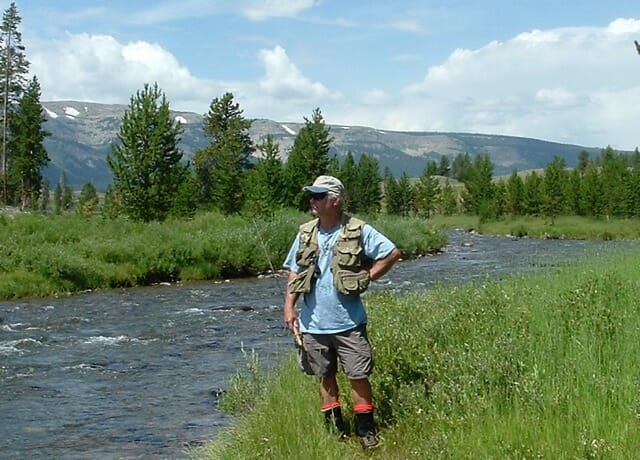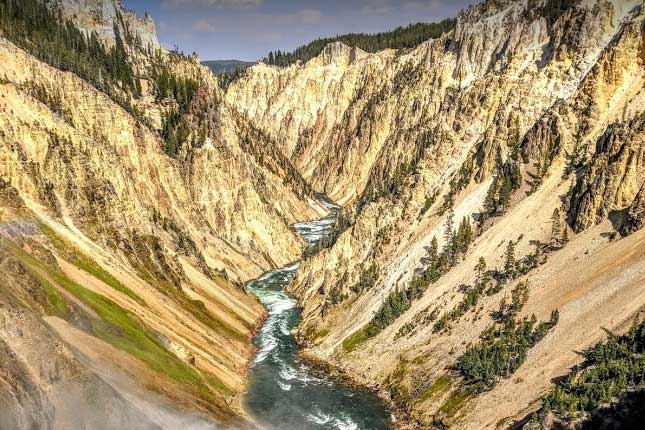Above, the view from the lip of Lower Yellowstone Falls. Photo by Chris Hunt. Below, Larry Harris on Indian Creek in Yellowstone National Park.
by Larry Harris
I have camped and fished in Yellowstone Park almost every year from 1992 to the present, enjoying weeks there with family and friends. Yellowstone Park is crowded when we visit as summer tourists drive the loops and see the marvelous geysers, waterfalls and wildlife. But what brings me and my wife, Cindy, back year after is being able to see wilderness close to the way it’s been for … who knows how many years?

We can walk a mile or two into the backcountry along a trail that follows a stream, and fish until we are tired of catching fish. We seldom see another person out there, although a stray bison, elk or bear sometimes amble by. So nearly alone, with the wilderness and the backdrop of snow-capped mountains…unchanging…or is it?
A recent article in the New York Times on Nov. 15 by Marguerite Holloway, entitled, “Your Children’s Yellowstone Will Be Radically Different,” details what changes will occur if climate change continues its current course. She points out that “Over the next few decades of climate change, the country’s first national park will quite likely see increased fire, less forest, expanding grasslands, shallower, warmer waterways, and more invasive plants.” We already see an impact on trout due to climate change: Winters are shorter and spring comes with earlier melting of the snow pack, leading to less cold water for trout in the summer months. This has led to stream closures as water temperatures rise to levels that would stress trout during catch and release.
Yellowstone Park, with its rich ecosystems has allowed wildlife biologists to restore and protect species lost elsewhere in the U.S. Bison, elk, wolves and grizzly bears are spectacular examples of their success. Trout Unlimited has played an important role helping to restore the native cutthroat trout to the Yellowstone Lake, after illegal stocking of voracious lake trout resulted in the near extirpation of the cutthroats.
Due to TU’s support and the efforts of the Park Service, the populations of Lake Trout have been greatly reduced and the cutthroat trout are making a recovery. Will this recovery continue if the warming trends go on and water temperatures become unsuited to these trout?
The last sentences of the article illustrate why Yellowstone may become a different place for our children’s children:
“Yellowstone provides a refuge for people seeking and delighting in a sense of wilderness. It offers a landscape unlike any other: a largely intact ecosystem rich in wildlife and rich in geothermal features. Yellowstone’s unusual beauty was forged by volcanic heat; heat from humanity could be its undoing.”
Larry Harris is the chairman emeritus of Trout Unlimited’s National Leadership Council.


